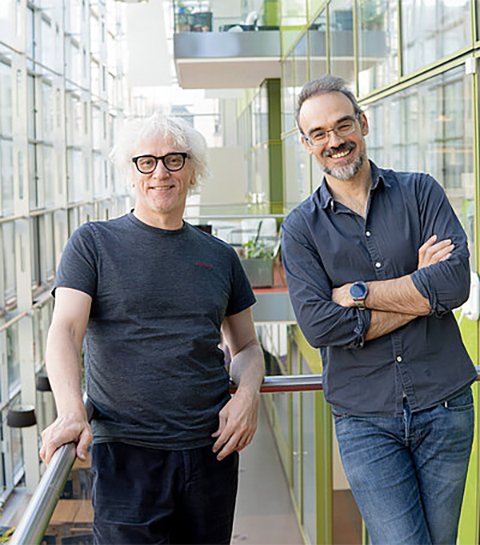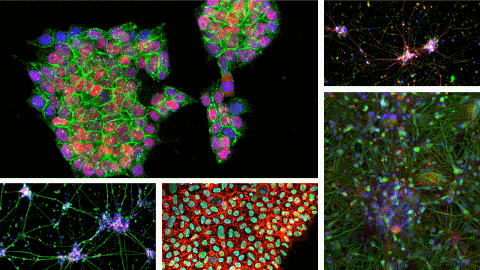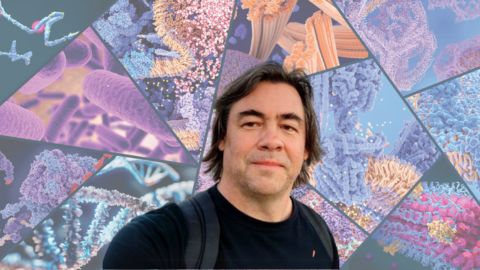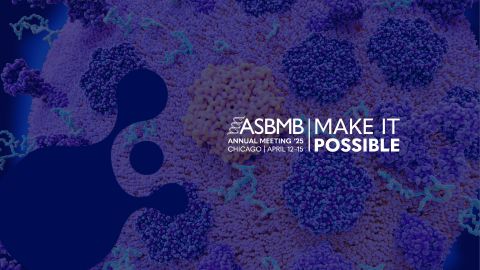Muscle health depends on lipid synthesis
Muscle degeneration in inherited diseases and aging affects hundreds of millions of people worldwide. Degeneration of skeletal muscles, the body’s protein reservoir, leads to general physiological decline, a condition called frailty. Now, a research team led by Domagoj Cikes at the Institute of Molecular Biology, an academic research institute of the Austrian Academy of Sciences,and Josef Penninger at IMBA and the University of British Columbia has uncovered the central role of an enzyme called PCYT2 in muscle health.
PCYT2 is known as the bottleneck enzyme in a major synthesis pathway of ethanolamine-derived phospholipids, the phosphatidylethanolamines (PEs). Based on patient data and using laboratory mouse and zebrafish models, they showed that mutations affecting PCYT2, or its reduced activity, are conserved hallmarks of muscle degeneration across vertebrates. Specifically, they demonstrated that PCYT2 deficiency in muscles affects mitochondrial function and the physicochemical properties of the myofiber membrane.

Membrane rigidity, aging and conservation in vertebrates
Lipids are ubiquitously present in biological membranes and are present at particularly high concentrations in the membranes of nerve cells and neural tissues. Following reports that PE-based molecules enhance the membrane rigidity of liposomes, Domagoj Cikes, the study’s co-corresponding author and a former postdoctoral researcher in the Penninger lab at IMBA, hypothesized that this lipid species may play an important role in tissues subjected to constant shear stress, such as muscle tissue.
“This assumption prompted me to selectively deplete PCYT2 in muscle tissues of animal models and study the outcome. In parallel, clinicians reported patient cases of mutations affecting PCYT2. The patients presented a condition called complex hereditary spastic paraplegia, a severe, multi-symptomatic disease characterized by leg muscle weakness, stiffness, and muscle wasting that worsened with time. However, given that the disease was just recently discovered, the underlying pathophysiological biology is vastly unknown,” said Cikes.

The researchers demonstrated that the levels of functional PCYT2 are linked to human muscle health and affect the muscle tissues of mice and zebrafish. The mouse models in particular showed striking and severe phenotypes of muscle growth retardation and quick deterioration upon PCYT2 depletion. They noted that this phenotype of fast deterioration in the mouse models resembled accelerated aging. Thus, Cikes and colleagues showed that PCYT2 plays a conserved role in vertebrates.
PEs are also abundant in mitochondrial membranes. Therefore, the researchers examined how PCYT2 depletion in muscle tissues affects mitochondrial membrane homeostasis and found that PCYT2 depletion indeed altered mitochondrial function and muscle energetics. However, a mitochondrial therapeutic approach was not sufficient to rescue the phenotype in mice. “This prompted us to think that there must be an additional mechanism driving the pathology,” said Cikes. Indeed, the team showed that the organization of the cell membrane lipid bilayer played an additional role. “This represents a novel pathophysiological mechanism that might also be present in other lipid-related disorders,” Cikes said.
In addition, the team demonstrated that PCYT2 activity decreased during aging in humans and mice. Using a targeted delivery technique of active PCYT2, the scientists were able to rescue muscle weakness in PCYT2-depleted mouse models and improve muscle strength in old mice.

Technical advances to understand the biology and pathophysiology
Having linked muscle health in vertebrates with PEs and muscle membrane composition, the researchers studied the role of lipid species in biological membranes. As biological work with lipids is particularly challenging, they also needed to think of ways to advance the available research applications. By adapting a technique developed by Kareem Elsayad at the Vienna BioCenter Core Facilities (VBCF) to measure tissue stiffness using Brillouin Light Scattering (BLS), the researchers were able to examine the physical properties of biological membranes. With this technique, the team demonstrated a considerable decrease in membrane surface stiffness when PCYT2 was depleted in mouse muscles.
“In addition, our current work makes another leap forward in the field of lipid biology, as we were able to peek into the lipid bilayer of cell membranes and examine the local properties of structural lipids,” says Cikes. The technique is based on isolating giant plasma membrane vesicles from biological tissues and studying the physicochemical properties and geometry of the membrane bilayer by means of an intercalating dye. This approach allows the scientists to examine how well the lipids in the bilayer are matched and whether they observe gaps, hydrophilic components, and leakages through the membrane.
The biology of lipids — crucial, yet understudied
“Current knowledge on the biology of lipids is largely oversimplified. The whole lipid field is summarized into a handful of molecular families, such as cholesterols, triglycerides, phospholipids and fatty acids. It is a vast and unexplored molecular universe where the function of most species in health and disease is unknown.” Cikes said. By shedding light on the central effect of a lipid biosynthesis pathway in muscle health, Cikes and the team wish to highlight the importance and discovery potential of lipid research.
“Our current work demonstrates a fundamental, specific, and conserved role of PCYT2-mediated lipid synthesis in vertebrate muscle health and allows us to explore novel therapeutic avenues to improve muscle health in rare diseases and aging,” Penninger said.
This article was first published by the Austrian Academy of Sciences Institute of Molecular Biotechnology. Read the original.
Enjoy reading ASBMB Today?
Become a member to receive the print edition four times a year and the digital edition monthly.
Learn moreGet the latest from ASBMB Today
Enter your email address, and we’ll send you a weekly email with recent articles, interviews and more.
Latest in Science
Science highlights or most popular articles

Melissa Moore to speak at ASBMB 2025
Richard Silverman and Melissa Moore are the featured speakers at the ASBMB annual meeting to be held April 12-15 in Chicago.

A new kind of stem cell is revolutionizing regenerative medicine
Induced pluripotent stem cells are paving the way for personalized treatments to diabetes, vision loss and more. However, scientists still face hurdles such as strict regulations, scalability, cell longevity and immune rejection.

Engineering the future with synthetic biology
Learn about the ASBMB 2025 symposium on synthetic biology, featuring applications to better human and environmental health.

Scientists find bacterial ‘Achilles’ heel’ to combat antibiotic resistance
Alejandro Vila, an ASBMB Breakthroughs speaker, discussed his work on metallo-β-lactamase enzymes and their dependence on zinc.

Host vs. pathogen and the molecular arms race
Learn about the ASBMB 2025 symposium on host–pathogen interactions, to be held Sunday, April 13 at 1:50 p.m.

Richard Silverman to speak at ASBMB 2025
Richard Silverman and Melissa Moore are the featured speakers at the ASBMB annual meeting to be held April 12-15 in Chicago.

